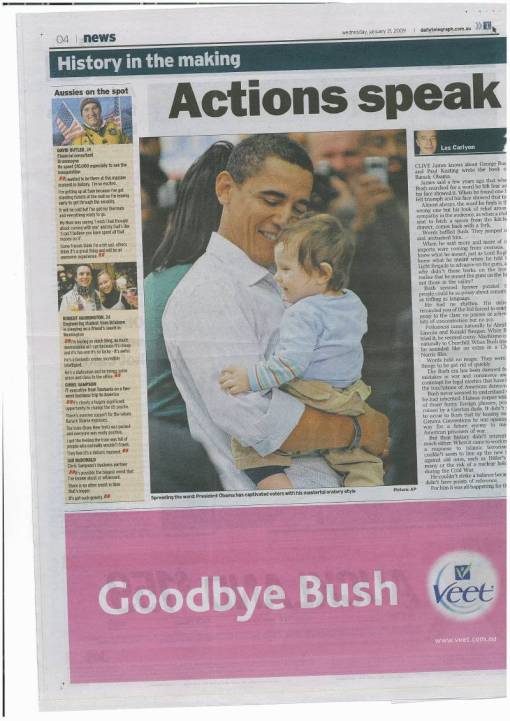
This wonderful ad was spotted in Sydney’s Daily Telegraph.
There beneath the inevitable article about Obama… was an advert for the hair removal product ‘Veet’, and the simple line “Goodbye Bush”.
I share this because it reminded me that sometimes it pays to think about when your audience will be zoned into your cause, and so it often pays to have a “quick-fire” strategy already mapped out for taking advantages of these moments of high interest.
This doesn’t need to be limited to charities delaing with crises or disasters.
A health charity may feel it appropriate to advertise when a celebrity dies – it doesn’t have to be done without sympathy. A doggie rescue charity may keep an eye out for a famous celebrity losing his or her dog. An environmental charity may use a newspaper heading to spark a new campaign.
Think about your potential spikes in interest, and then develop a strategy for ensuring you can respond quickly and creatively.
You can look more closely here at this inspiring reminder of the importance of timing here…










